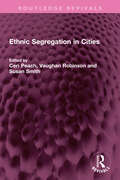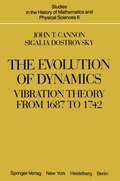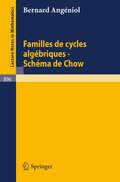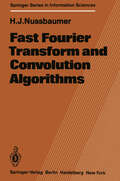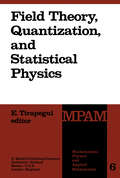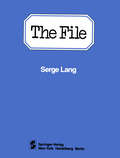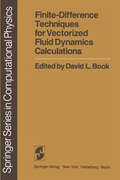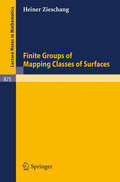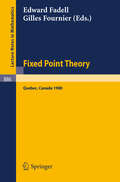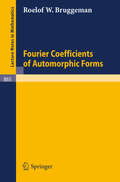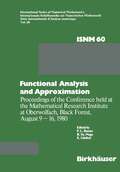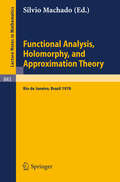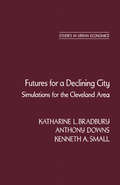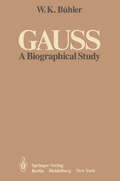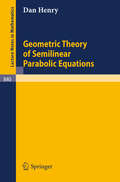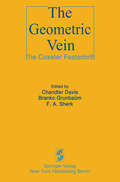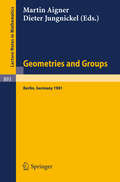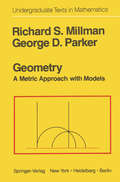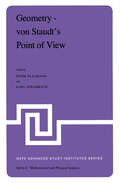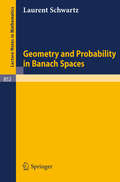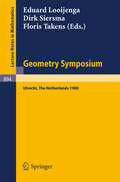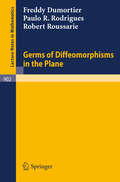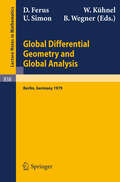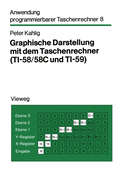- Table View
- List View
Ethnic Segregation in Cities (Routledge Revivals)
First published in 1981, Ethnic Segregation in Cities argues that race and ethnicity are fundamental to writing about the city, and that economic patterns adapt themselves to race and ethnicity rather than vice versa. The problem of ethnic segregation is a burning one for both geographers and sociologists – geographers because of the concern for all aspects of urban deprivation, and sociologists because they are discovering that space and spatial processes are important factors in influencing social segregation or assimilation. The book brings together some of the main contributors to the literature on spatial aspects of ethnicity from both sides of the Atlantic. A variety of evidence from New York, Detroit, Bradford and Blackburn address the question of whether choice on the path of ethnic members, or constraints imposed by the host society are determinant factors influencing residential segregation. This book will be of interest to students of sociology, human geography and urban studies.
The Evolution of Dynamics: Vibration Theory from 1687 to 1742 (Studies in the History of Mathematics and Physical Sciences #6)
by J. T. Cannon S. DostrovskyIn this study we are concerned with Vibration Theory and the Problem of Dynamics during the half century that followed the publication of Newton's Principia. The relationship that existed between these subject!! is obscured in retrospection for it is now almost impossible not to view (linear) Vibration Theory as linearized Dynamics. But during the half century in question a theory of Dynamics did not exist; while Vibration Theory comprised a good deal of acoustical information, posed definite problems and obtained specific results. In fact, it was through problems posed by Vibration Theory that a general theory of Dynamics was motivated and discovered. Believing that the emergence of Dynamics is a critically important link in the history of mathematical science, we present this study with the primary goal of providing a guide to the relevant works in the aforemen tioned period. We try above all to make the contents of the works readily accessible and we try to make clear the historical connections among many of the pertinent ideas, especially those pertaining to Dynamics in many degrees of freedom. But along the way we discuss other ideas on emerging subjects such as Calculus, Linear Analysis, Differential Equations, Special Functions, and Elasticity Theory, with which Vibration Theory is deeply interwound. Many of these ideas are elementary but they appear in a surprising context: For example the eigenvalue problem does not arise in the context of special solutions to linear problems-it appears as a condition for isochronous vibrations.
Familles de Cycles Algebriques - Schema de Chow (Lecture Notes in Mathematics #896)
by Bernard AngeniolFast Fourier Transform and Convolution Algorithms (Springer Series in Information Sciences #2)
by H.J. NussbaumerThis book presents in a unified way the various fast algorithms that are used for the implementation of digital filters and the evaluation of discrete Fourier transforms. The book consists of eight chapters. The first two chapters are devoted to background information and to introductory material on number theory and polynomial algebra. This section is limited to the basic concepts as they apply to other parts of the book. Thus, we have restricted our discussion of number theory to congruences, primitive roots, quadratic residues, and to the properties of Mersenne and Fermat numbers. The section on polynomial algebra deals primarily with the divisibility and congruence properties of polynomials and with algebraic computational complexity. The rest of the book is focused directly on fast digital filtering and discrete Fourier transform algorithms. We have attempted to present these techniques in a unified way by using polynomial algebra as extensively as possible. This objective has led us to reformulate many of the algorithms which are discussed in the book. It has been our experience that such a presentation serves to clarify the relationship between the algorithms and often provides clues to improved computation techniques. Chapter 3 reviews the fast digital filtering algorithms, with emphasis on algebraic methods and on the evaluation of one-dimensional circular convolutions. Chapters 4 and 5 present the fast Fourier transform and the Winograd Fourier transform algorithm.
Field Theory, Quantization and Statistical Physics: In Memory of Bernard Jouvet (Mathematical Physics and Applied Mathematics #6)
by E. TirapeguiThe File: Case Study in Correction (1977–1979)
by Serge LangThe File is a collection of documents from a major dispute involving a number of American college professors, mainly mathematicians, statisticians,and sociologists. The controversy was ignited by the mathematician Serge Lang's reaction to a questionnaire, "The 1977 Survey of the American Professoriate", distributed by E. C. Ladd of the University of Connecticut and S. M. Lipset of Stanford. The ensuing discussion - in part acrimonious and personal - soon involved a large group of active and passive participants, and included issues such as survey techniques, evaluation of academic work, public and political honesty, and McCarthyism at Harvard.
Finite-Difference Techniques for Vectorized Fluid Dynamics Calculations (Scientific Computation)
by J. P. Boris M. J. Fritts R. V. Madala B. E. McDonald N. K. Winsor S. T. ZalesakThis book describes several finite-difference techniques developed recently for the numerical solution of fluid equations. Both convective (hyperbolic) equations and elliptic equations (of Poisson's type) are discussed. The em phasis is on methods developed and in use at the Naval Research Laboratory, although brief descriptions of competitive and kindred techniques are included as background material. This book is intended for specialists in computational fluid dynamics and related subjects. It includes examples, applications and source listings of program modules in Fortran embodying the methods. Contents Introduction 1 (D. L. Book) 2 Computational Techniques for Solution of Convective Equations 5 (D. L. Book and J. P. Boris) 2. 1 Importance of Convective Equations 5 2. 2 Requirements for Convective Equation Algorithms 7 2. 3 Quasiparticle Methods 10 2. 4 Characteristic Methods 13 2. 5 Finite-Difference Methods 15 2. 6 Finite-Element Methods 20 2. 7 Spectral Methods 23 3 Flux-Corrected Transport 29 (D. L. Book, J. P. Boris, and S. T. Zalesak) 3. 1 Improvements in Eulerian Finite-Difference Algorithms 29 3. 2 ETBFCT: A Fully Vectorized FCT Module 33 3. 3 Multidimensional FCT 41 4 Efficient Time Integration Schemes for Atmosphere and Ocean Models 56 (R. V. Madala) 4. 1 Introduction 56 4. 2 Time Integration Schemes for Barotropic Models 58 4. 3 Time Integration Schemes for Baroclinic Models 63 4. 4 Extension to Ocean Models 70 David L. Book, Jay P. Boris, and Martin J. Fritts are from the Laboratory for Computational Physics, Naval Research Laboratory, Washington, D. C.
Fixed Point Theory: Proceedings of a Conference Held at Sherbrooke, Quebec, Canada, June 2-21, 1980 (Lecture Notes in Mathematics #886)
by E. Fadell G. FournierFunctional Analysis and Approximation: Proceedings of the Conference held at the Mathematical Research Institute at Oberwolfach, Black Forest, August 9–16, 1980 (International Series of Numerical Mathematics #60)
by P.L. Butzer E. Gärlich B. Szökefalvi-NagyThese Proceedings form a record of the lectures presented at the interna tional Conference on Functional Analysis and Approximation held at the Ober wolfach Mathematical Research Institute, August 9-16, 1980. They include 33 of the 38 invited conference papers, as well as three papers subsequently submitted in writing. Further, there is a report devoted to new and unsolved problems, based on two special sessions of the conference. The present volume is the sixth Oberwolfach Conference in Birkhauser's ISNM series to be edited at Aachen *. It is once again devoted to more significant results obtained in the wide areas of approximation theory, harmonic analysis, functional analysis, and operator theory during the past three years. Many of the papers solicited not only outline fundamental advances in their fields but also focus on interconnections between the various research areas. The papers in the present volume have been grouped into nine chapters. Chapter I, on operator theory, deals with maps on positive semidefinite opera tors, spectral bounds of semigroup operators, evolution equations of diffusion type, the spectral theory of propagators, and generalized inverses. Chapter II, on functional analysis, contains papers on modular approximation, interpolation spaces, and unconditional bases.
Functional Analysis, Holomorphy, and Approximation Theory: Proceedings of the Seminario de Analise Functional Holomorfia e Teoria da Aproximacao, Universidade Federal do Rio de Janeiro, Brazil, August 7-11, 1978 (Lecture Notes in Mathematics #843)
by S. MachadoFutures for a Declining City: Simulations for the Cleveland Area
by Katharine L. Bradbury Anthony Downs Kenneth A. SmallFutures for a Declining City: Simulations for the Cleveland Area discusses the processes associated with decrease in urban population or “urban decline" and other measures of urban size or function. This book describes the case study that analyzes what will happen to a declining metropolitan area and its central city if current trends on urban decline continue, and how that outcome might be affected by various policies designed to counteract further loss. This case study focuses on the Cleveland Standard Metropolitan Statistical Area (SMSA) and its central city, Cleveland. The likely future course of urban decline acquired through quantitative estimates and methodologies for comparing policies is also covered in this text. This publication is aimed primarily at economists, urban planners, and political scientists, including those who formulate policies affecting declining urban areas.
Gauss: A Biographical Study
by W. K. BühlerProcreare iucundum, sed parturire molestum. (Gauss, sec. Eisenstein) The plan of this book was first conceived eight years ago. The manuscript developed slowly through several versions until it attained its present form in 1979. It would be inappropriate to list the names of all the friends and advisors with whom I discussed my various drafts but I should like to mention the name of Mr. Gary Cornell who, besides discussing with me numerous details of the manuscript, revised it stylistically. There is much interest among mathematicians to know more about Gauss's life, and the generous help I received has certainly more to do with this than with any individual, positive or negative, aspect of my manuscript. Any mistakes, errors of judgement, or other inadequacies are, of course, the author's responsi bility. The most incisive and, in a way, easiest decisions I had to make were those of personal taste in the choice and treatment of topics. Much had to be omitted or could only be discussed in a cursory way.
Geometric Theory of Semilinear Parabolic Equations (Lecture Notes in Mathematics #840)
by Daniel HenryThe Geometric Vein: The Coxeter Festschrift
by C. Davis B. Grünbaum F. A. SherkGeometry has been defined as that part of mathematics which makes appeal to the sense of sight; but this definition is thrown in doubt by the existence of great geometers who were blind or nearly so, such as Leonhard Euler. Sometimes it seems that geometric methods in analysis, so-called, consist in having recourse to notions outside those apparently relevant, so that geometry must be the joining of unlike strands; but then what shall we say of the importance of axiomatic programmes in geometry, where reference to notions outside a restricted reper tory is banned? Whatever its definition, geometry clearly has been more than the sum of its results, more than the consequences of some few axiom sets. It has been a major current in mathematics, with a distinctive approach and a distinc ti v e spirit. A current, furthermore, which has not been constant. In the 1930s, after a period of pervasive prominence, it appeared to be in decline, even passe. These same years were those in which H. S. M. Coxeter was beginning his scientific work. Undeterred by the unfashionability of geometry, Coxeter pursued it with devotion and inspiration. By the 1950s he appeared to the broader mathematical world as a consummate practitioner of a peculiar, out-of-the-way art. Today there is no longer anything that out-of-the-way about it. Coxeter has contributed to, exemplified, we could almost say presided over an unanticipated and dra matic revival of geometry.
Geometries and Groups: Proceedings of a Colloquium Held at the Freie Universität Berlin, May 1981 (Lecture Notes in Mathematics #893)
by M. Aigner D. JungnickelDedicated to Professor Dr. Hanfried Lenz on the Occasion of his 65th Birthday
Geometry: A Metric Approach with Models (Undergraduate Texts in Mathematics)
by R.S. Millman G.D. ParkerThis book is intended as a first rigorous course in geometry. As the title indicates, we have adopted Birkhoff's metric approach (i.e., through use of real numbers) rather than Hilbert's synthetic approach to the subject. Throughout the text we illustrate the various axioms, definitions, and theorems with models ranging from the familiar Cartesian plane to the Poincare upper half plane, the Taxicab plane, and the Moulton plane. We hope that through an intimate acquaintance with examples (and a model is just an example), the reader will obtain a real feeling and intuition for non Euclidean (and in particular, hyperbolic) geometry. From a pedagogical viewpoint this approach has the advantage of reducing the reader's tendency to reason from a picture. In addition, our students have found the strange new world of the non-Euclidean geometries both interesting and exciting. Our basic approach is to introduce and develop the various axioms slowly, and then, in a departure from other texts, illustrate major definitions and axioms with two or three models. This has the twin advantages of showing the richness of the concept being discussed and of enabling the reader to picture the idea more clearly. Furthermore, encountering models which do not satisfy the axiom being introduced or the hypothesis of the theorem being proved often sheds more light on the relevant concept than a myriad of cases which do.
Geometry — von Staudt’s Point of View: Proceedings of the NATO Advanced Study Institute held at Bad Windsheim, West Germany, July 21—August 1,1980 (Nato Science Series C: #70)
by P. Plaumann K. StrambachProceedings of the NATO Advanced Study Institute, Bad Windesheim, West Germany, July 21-August 1, 1980
